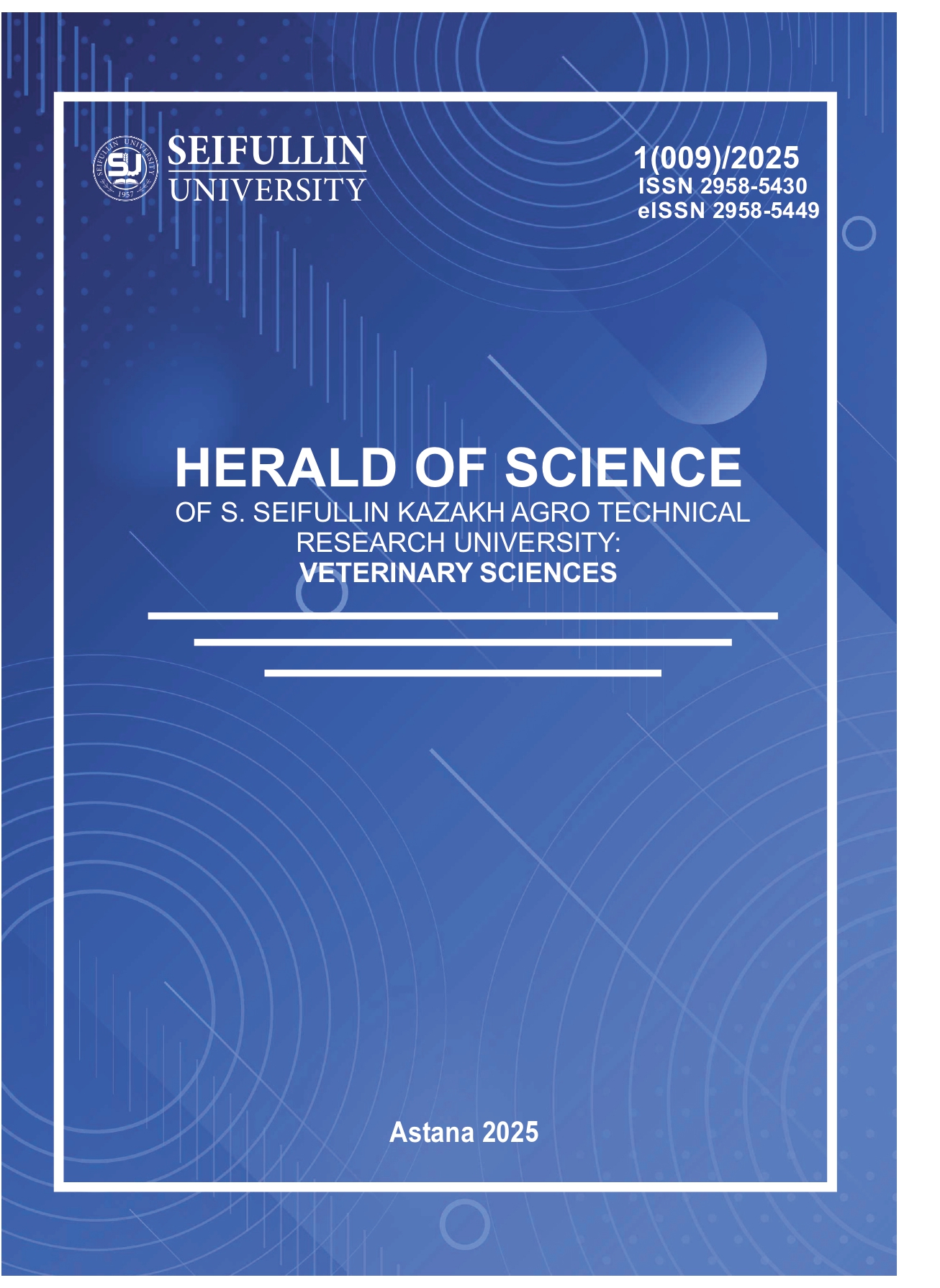Immunogenic activity of a prototype activated moraxella vaccine under experimental conditions
##plugins.pubIds.doi.readerDisplayName##:
https://doi.org/10.51452/kazatuvc.2025.5(009).1791Ключевые слова:
immunogenicity; Moraxella bovis; prevention; pinkeye; vaccine.Аннотация
Background and Aim. The spread of moraxellosis in cattle among Kazakhstan has become a pressing issue in modern agricultural markets. Preventive measures are essential to mitigate economic losses. This study aimed to assess the immunogenic activity of a prototype inactivated autogenous antimoraxellosis vaccine developed from a local inactivated strain of the pathogen.
Materials and Methods. An outbreak culture was isolated from an animal showing signs of infectious eye disease, which was identified as Moraxella bovis B-2017/44 based on its culture and morphological characteristics. This strain was used to produce an autogenous vaccine using Montanide ISA 70 VG oil adjuvant (France). The vaccine’s immunogenicity was tested via a prolonged complement fixation reaction in Aberdeen Angus calves. The immunogenic properties were evaluated in comparison with a vaccine for infectious bovine keratoconjunctivitis, which utilizes Moraxella bovis antigens and herpesvirus type I, created in Kazan, Russia.
Results. The autogenous anti-moraxellosis vaccine with Montanide ISA 70 VG adjuvant was effective against moraxellosis in cattle. Sterility and safety were evaluated in laboratory animals, whereas immunogenicity was assessed in calves over 12 months. The highest antibody titers were recorded on day 120 after vaccination.
Conclusion. The developed vaccine, based on the locally inactivated strain Moraxella bovis B-2017/44, enhances antiepizootic efforts and reduces economic losses from infectious keratoconjunctivitis in cattle.

